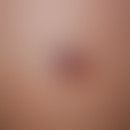Synonym(s)
DefinitionThis section has been translated automatically.
Comfrey is an ancient medicinal plant, a perennial that grows up to 100 m high with taproot reaching up to 30 cm deep into the earth. Native to almost all of Europe and the temperate zones of Asia and Siberia. Flowering time is May to July.
Phytotherapeutically, the dried roots(comfreyroot - Symphyti radix) and the dried herb (comfrey herb - Symphyti herba; Symphytum uplandicum) are used.
See Symphytum officinale L. In naturopathy, extracts of comfrey root or comfrey herb (Symphyti herba, Symphytum uplandicum) belong to the group of phytopharmaceuticals and are used primarily for diseases of the musculoskeletal system.
Pharmacodynamics (Effect)This section has been translated automatically.
Comfrey root has an anti-inflammatory, anti-swelling and anti-microbial effect and also promotes granulation and wound healing, as well as promoting callus formation. Improves blood circulation.
You might also be interested in
Spectrum of actionThis section has been translated automatically.
Ingredients: allantoin, rosmarinic acid, mucilages and tannins, hydroxycinnamic acid, non-toxic pyrrolizidine alkaloids.
IndicationThis section has been translated automatically.
External: contusions, strains, sprains, muscle and joint pain due to blunt injury.
Internal: systemic application is contraindicated because of hepatotoxic and carcinogenic effects in animal studies.
ContraindicationThis section has been translated automatically.
Use is not recommended during pregnancy, breastfeeding or in the presence of hypersensitivity to comfrey.
Comfrey preparations must also not be used in children under 3 years of age due to a lack of knowledge.
PreparationsThis section has been translated automatically.
Arthrodynat® ointment, Hocura® spondylose ointment, Kytta-Balsam®, Kytta-Plasma®f, Kytta-Salve®f, Syviman® N ointment, Traumaplant® cream, Zeel® T ointment
LiteratureThis section has been translated automatically.
- Araújo LU et al. (2012) In vivo wound healing effects of Symphytum officinale L. leaves extract in different topical formulations. Pharmacy 67:355-360.
- Barna M et al. (2012) Randomized double-blind study: wound-healing effects of a Symphytum herb extract cream (Symphytum xuplandicum Nyman) in children. Drug Research 62:285-289.
- Horinouchi CD et al. (2013) Botanical briefs: comfrey (Symphytum officinale).Cutis 91:225-228.
- Loew D (2012) in Beer A M et al [eds] Leitfaden Naturheilverfahren für die ärztliche Praxis, Urban und Fischer Verlag.
- Pazyar N et al (2014) Skin wound healing and phytomedicine: a review. Skin Pharmacol Physiol 27:303-310.
- Staiger C (2013) Comfrey root: from tradition to modern clinical trials. Wien Med Wochenschr 163(3-4):58-64.
- https://arzneipflanzenlexikon.info/beinwell.php.
- Wenigmann M. (2017) Phytotherapy medicinal drugs, phytopharmaceuticals, application. Urban & Fischer, pp.77-78



